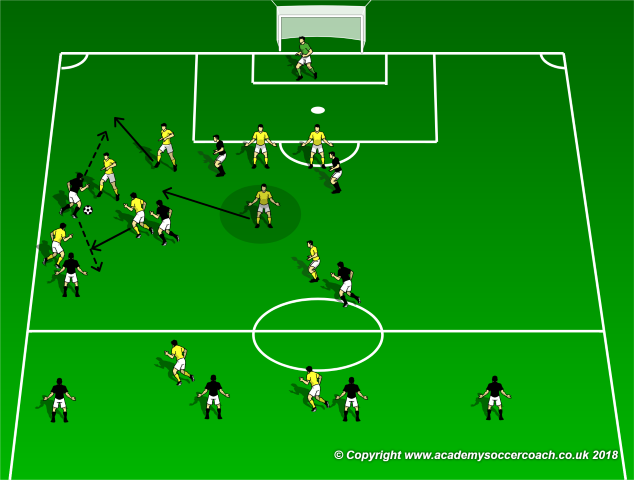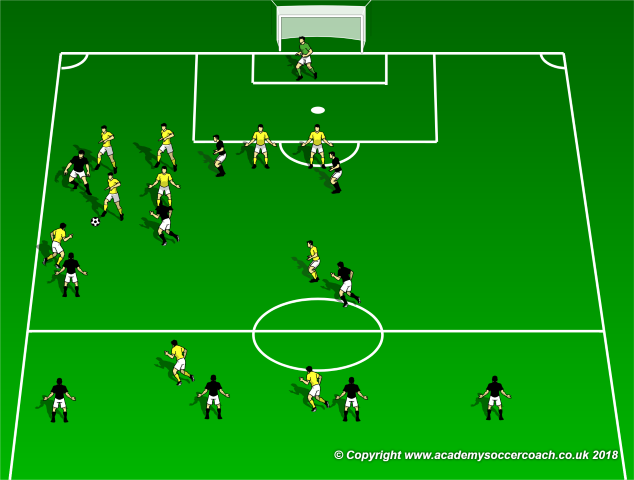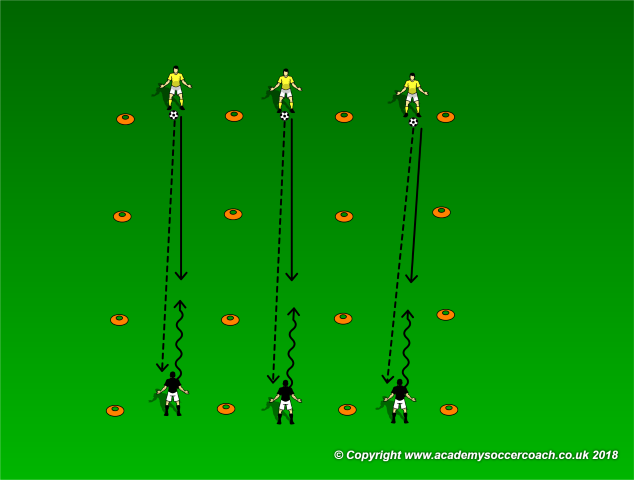By Mike Smith
No, don’t totally forget the ball in regards to soccer in general, however, a critical part of implementing a defensive style of play is perfecting body position, spacing, angles and timing; all of which have very little to do with the ball. The short version is “ don’t stab” but since the purpose of defense is really to get the ball back, many players feel like they have to always be attempting to get the ball immediately, which results in a lot of stabbing ( and missing ).
I remember watching an old coaching video and the coach kept saying “ If they can’t shoot they can’t score” followed closely by “ and I’ve never seen a shot go through anyone”. I have found my best defensive teams ( and my teams have set the goals allowed and shut out records at every school I have coached for ( 3 ) ) are those who have players dedicated to FIRST, just being in the ball handlers way. From a systems perspective I focus on always having someone an arms length away from the ball handler in the defensive third, with a goal of forcing the ATTACKER to pass or dribble backwards. With the space compacted around the ball, those passes tend to be over 10 yds and those are the ones which can be stolen. It looks like this:

With the first defender committed to containing the attacker on the ball, the defending side now has a chance to win the ball as a matter of formation. Pressure from an arms length away makes a clean play to the man marked strikers difficult, and the keeper can be used for cover. The player highlighted in the diagram above is critical to stealing the back pass although the pass will actually be stolen by the nearest defender. The highlighted player will provide cover as the nearest defender will have to leave their mark to attempt to steal the ball. For me, just like attacking players aren’t supposed to hang out where the want to receive the ball, a defending player shouldn’t be afraid to leave their mark to attempt to steal a winnable ball – initial containment and cover create this situation.

As shown above, the defending team has won the ball and is well poised to either possess or run a break of their own. Not really rocket science or innovative, but also not possible with players who fly in, stab and refuse to just contain an attacker. This is always worth a refresher as containment over stabbing should be the foundation of any good defensive system.
Set Up
Set up 9 cone boxes ( as shown below ) 5 x 5 to 10 x 10 yds apart, depending on the size, age and skill level of your squad. ( This can be repeated several times across the pitch for additional players ). 6 players in two groups of 3 compete to contain each other inside the grids. Play starts with the designated defending side ( yellow ) sending the ball across to the attacking players. Both players are trying to dribble across the end line of the grid so there should not be a lot of kicking the ball out, both players need to try to possess the ball at all times. The coach can set a time limit for each round, starting with 30 seconds. The team who gets the most players across the opposing teams end line gets a point for every player across. After 3 rounds, the attacking team sends the ball up to the defending side for an additional 3 rounds.

Progression
The coach can decrease the time from 30 seconds to 20 and 10 as a progression as well as let the attacking team start with the ball at their feet.
Coaching Points
The idea is containment and positioning to win the ball. The coach should focus all their attention on this aspect of the drill.
By Mike Smith
Currently the Head Coach for University Heights Academy Boys Soccer in Hopkinsville, KY , Mike is in his 14th year as a high school head coach with 23 years coaching experience overall and 34 year as a student and fan of the game. He holds a USSF D License.


